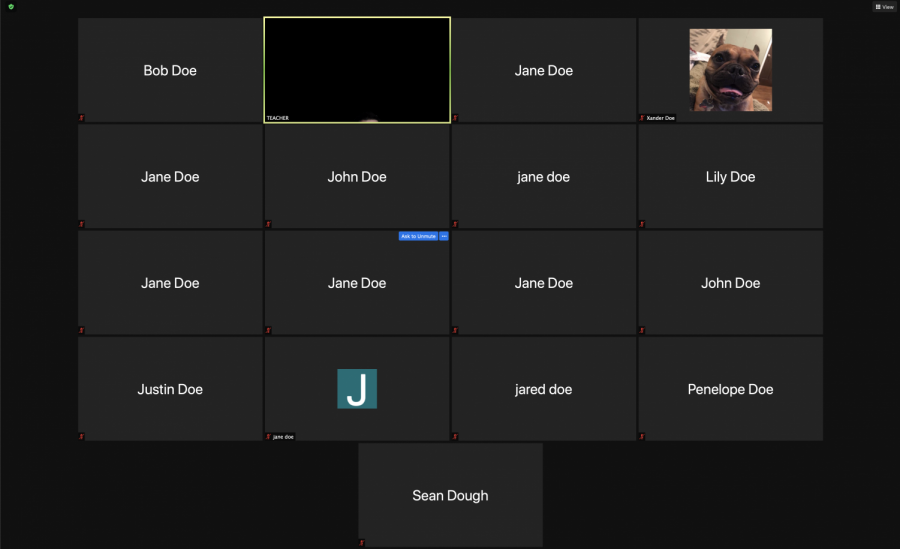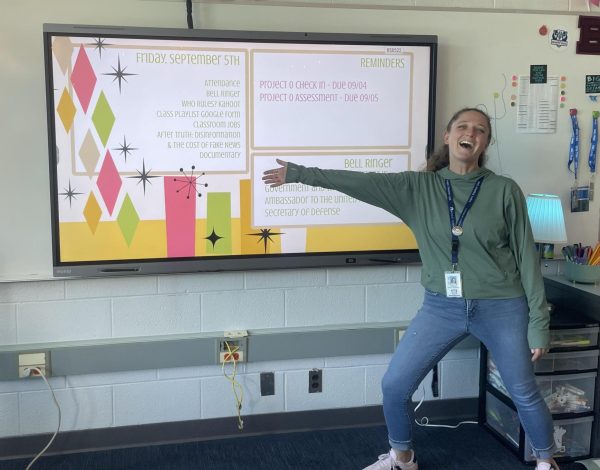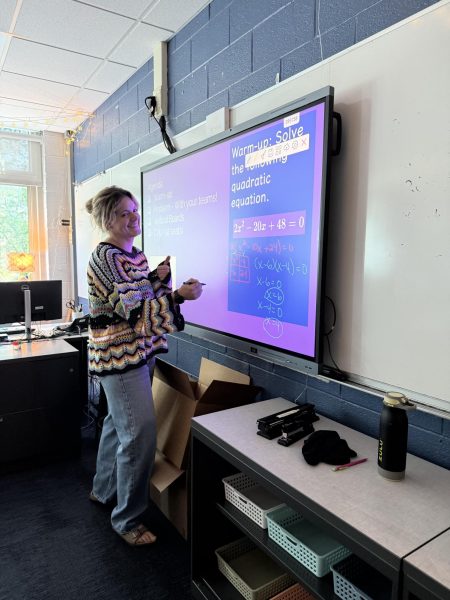Teaching in a Virtual World
While being a student during a global pandemic is difficult, being a teacher in one is extremely challenging as well. Understandably, students often focus on the experiences that they and their peers are going through during this unprecedented time, but have many of us stopped to think what it is like to be the person running that zoom call, or updating and organizing that Schoology page? In class, I am sure you have heard your teachers asking you to turn on your camera, but most people are still adjusting to online school and don’t feel like doing it. Communicating with, and seeing student’s faces makes online learning easier to connect to one another. For teachers, teaching to black screens feels like talking to a wall. Teachers at Berkley High School explain their experiences teaching in a virtual world.
All teachers that were interviewed for this piece agreed that they prefer regular school more than virtual, but there are some advantages of virtual. Ms. Sosnowski, Algebra 2 teacher at BHS stated, “I prefer in person school because I can get to know my students better when I see their faces every day.” However, online learning does have some advantages. Mrs. Nixon, Biology and Chemistry Science teacher added, “Both schooling types offer different approaches on how teaching and learning can excel. Online school has the capability to use lots of technology and new lesson media for both teachers and students.”
While online learning can be challenging, teachers have modified their techniques. Mr. Cierpal, English teacher, explains, “I’m trying to figure out ways to engage students in ways I wouldn’t have done before when we were in person. In Virtual learning, I can do more things then I could have done in a classroom. I can see what my students are typing on their google docs. I can really have a sense of if they are confused or on track.”
Mrs. Simone, History teacher, has a different perspective on online school. She stated, “This has been the most time-consuming and difficult task for me. I must be much more concise and deliberate in this form of teaching. Since we are not sitting in a room together, all of the normal interactive dynamics are missing, so I am making support videos to go along with my activities, recording audio clips of readings, and redesigning how and what my students do with the content.”
Most teachers agree that teaching during this time is difficult, and one of the main behaviors they say adds to this difficulty is when people choose to mute their video feed. They report that when students do not turn their camera on, it affects both the student and the teacher.
Mr. Cierpial attests to this saying, “Teachers have devoted their time to help students become better people. When we ask students to turn on their cameras it helps teachers do their job better.” Ms. Burroughs, Spanish teacher, explains, “I find it quite hard to look at black boxes and feel like there is two-way communication. It requires a lot of energy to stay enthusiastic. I tend to think that it’s pretty hard for any of us to feel like we are a community when we don’t see each other’s faces.”
Teaching to a black screen makes it challenging to connect with students. Mr. Cierpial comments that, “I have many students whose faces I have never seen. Teachers are missing information that students give that isn’t verbalized. In a zoom meeting, without cameras on it is very hard for teachers to help every student in their class. Teachers are missing hearing and seeing their students to make sure they understand the material. If the students are showing up but are only half engaged because their cameras aren’t on, then the student won’t get the most out of class.”
All teachers agreed that adjusting to online school took some time. Ms. Sosnowski explains, “I am used to online now, but it took way longer than I thought it would!”
Ms. Simone says, “I’m getting used to it more each day. However, I am constantly learning and adapting to this new environment.” Students can relate to this because we are also constantly learning how to navigate online school.
Virtual learning has its ups and downs for students as well. Ms. Simone stated, “Learning is messy, difficult, and exhausting. Dealing with this type of growth is difficult in both the face-to-face and in the online world.”
Some students are enjoying staying home. Mrs. Simone also says that students “like the flexibility. The fact that they can hang in pjs all day, and work without being distracted by others. These students are thriving and achieving. Some of my students are more stressed in this environment. They feel lonely and are confused by the school work being provided. These students are struggling and feeling defeated.”
Evidently, teachers miss being in regular school. They miss the community, seeing their students, talking face to face, and having discussions. They are working hard to make their classes the best they can. One message that all the teachers have in common is that they would find it helpful if students would turn their camera on. This is an extremely hard time in our world, and providing more of a community feel will be beneficial for both teachers and students.

Hi! I am Jane Heller, and I am Editor in Chief this year. This is my fourth year on staff. I decided to join writing for publication because I wanted more...







